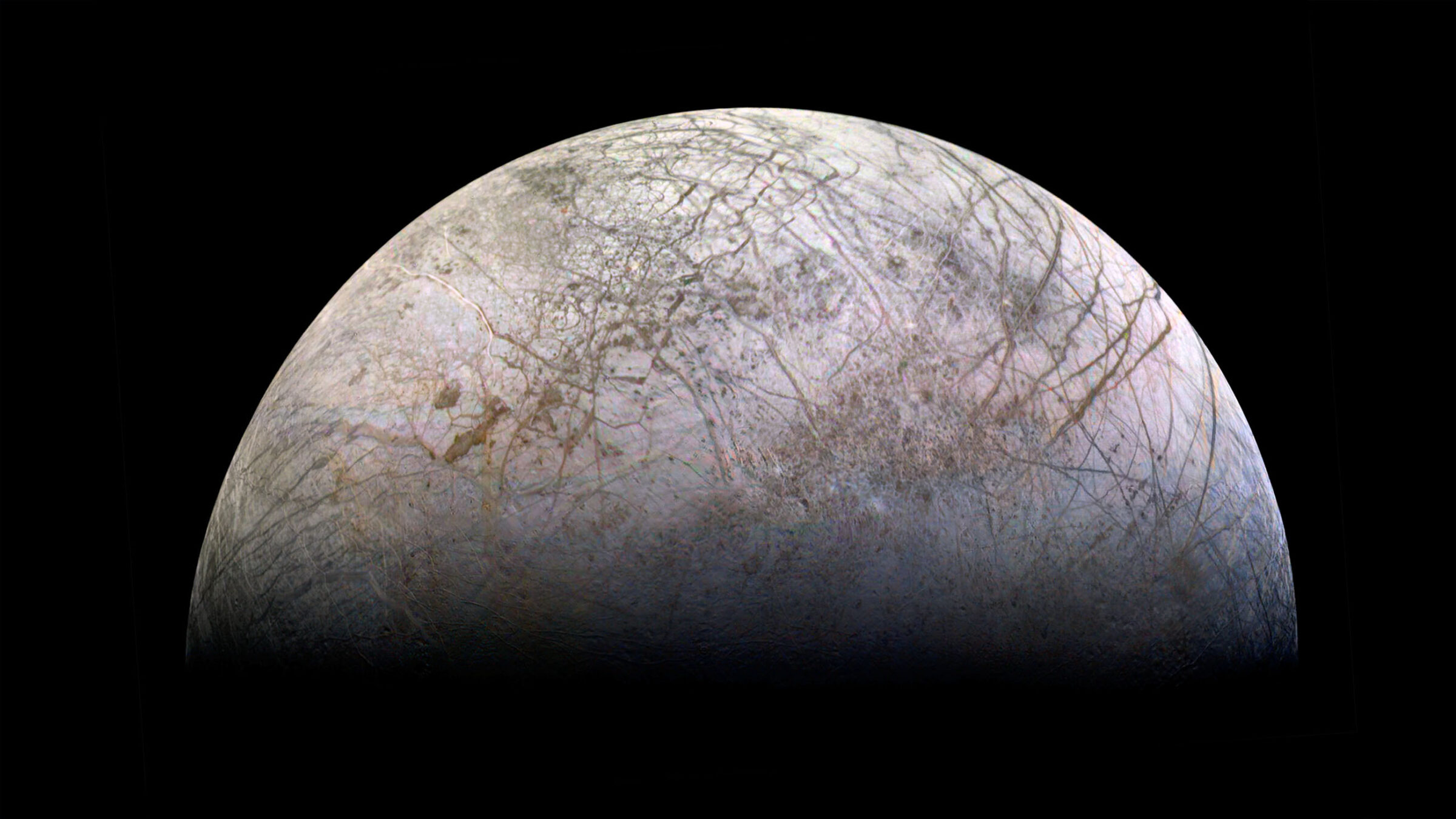Kate Howells • Oct 14, 2024
Europa Clipper launches on its journey to Jupiter’s icy moon
NASA’s Europa Clipper spacecraft launched today, beginning its six-year journey to Europa, a moon of Jupiter that may be hospitable to life as we know it. The spacecraft launched on October 14, 2024, at 12:06 p.m. EDT aboard a SpaceX Falcon Heavy rocket from NASA’s Kennedy Space Center in Cape Canaveral, Florida.
Europa is believed to hold an enormous amount of liquid water beneath its icy surface, potentially creating subsurface conditions that could be favorable to the development of life. Europa Clipper will perform 49 flybys of the moon over the course of its primary mission, investigating the conditions beneath the surface and potentially even flying through plumes of water that erupt through the ice.
“There’s very strong evidence that the ingredients for life exist on Europa,” said the mission’s Deputy Project Scientist, Bonnie Buratti, in a press conference on Sept. 17. “We have to go there to find out more, though. One of the main instruments onboard Clipper is the ice-penetrating radar, which will allow us to study the crust and see how deep the ocean is beneath the ice. We’ll also be able to detect subsurface lakes, if they exist, and study the strange reddish-brown material on the surface of Europa.”

This mission is unlike any other that NASA has ever developed, in large part because of the challenging conditions at the Jupiter system. At an average distance of 778 million kilometers (484 million miles) from the Sun, Jupiter receives relatively little sunlight.
“We had to build giant solar panels to capture the small amount of sunlight at Jupiter to power the spacecraft,” said Europa Clipper Project Manager Jordan Evans. “This is what made the Europa Clipper NASA’s largest-ever planetary spacecraft.”
Getting such a large spacecraft to such a distant destination is no easy feat. Although the Falcon Heavy rocket that launched the spacecraft used previously flown parts (including side boosters that were used to launch NASA’s Psyche mission in October 2023), none of the rocket’s parts will be recovered after Europa Clipper’s launch.
“By doing this, we maximize the lift capacity of the vehicle and ensure that all the fuel onboard is used to propel the spacecraft, enabling it to reach escape velocity,” said Armando Piloto, Senior Mission Manager for the Launch Services Program at Kennedy Space Center. “During the second stage burn, the spacecraft will be traveling at approximately 25,000 miles per hour, the fastest speed for a second stage ever.”
Once the spacecraft detaches from the rocket, it will still have plenty of its own propellant on board — more than 2,700 kilograms (6,000 pounds). When it reaches the Jupiter system, its 24 engines will burn 50-60% of that fuel to propel Europa Clipper into orbit around Jupiter.

The effort required to get an enormous spacecraft to an extremely distant world is staggering, and the funding to make it happen wasn’t always guaranteed. While the planetary science community has long seen Europa as a primary target in the search for life, the U.S. Congress took some convincing to allocate the funds needed to explore it. The Planetary Society and our members advocated for many years in support of this mission, ensuring NASA got the budget it needed.
"Europa Clipper taking off is a huge milestone for so many people,” said Planetary Society CEO Bill Nye. “Not just the scientists and engineers who worked on it, but the thousands of advocates who helped make sure Congress gave NASA the funding it needed to get this mission off the ground and into space. We're all on a journey to Europa now, and I can hardly wait to see what we can find out there."
All of this hard work will surely be worthwhile. “Every mission we’ve ever sent to explore a new world has uncovered surprises we never imagined,” said Buratti, “and I’m confident that Europa Clipper will be no different.”
Support our core enterprises
Your support powers our mission to explore worlds, find life, and defend Earth. You make all the difference when you make a gift. Give today!
Donate

 Explore Worlds
Explore Worlds Find Life
Find Life Defend Earth
Defend Earth

